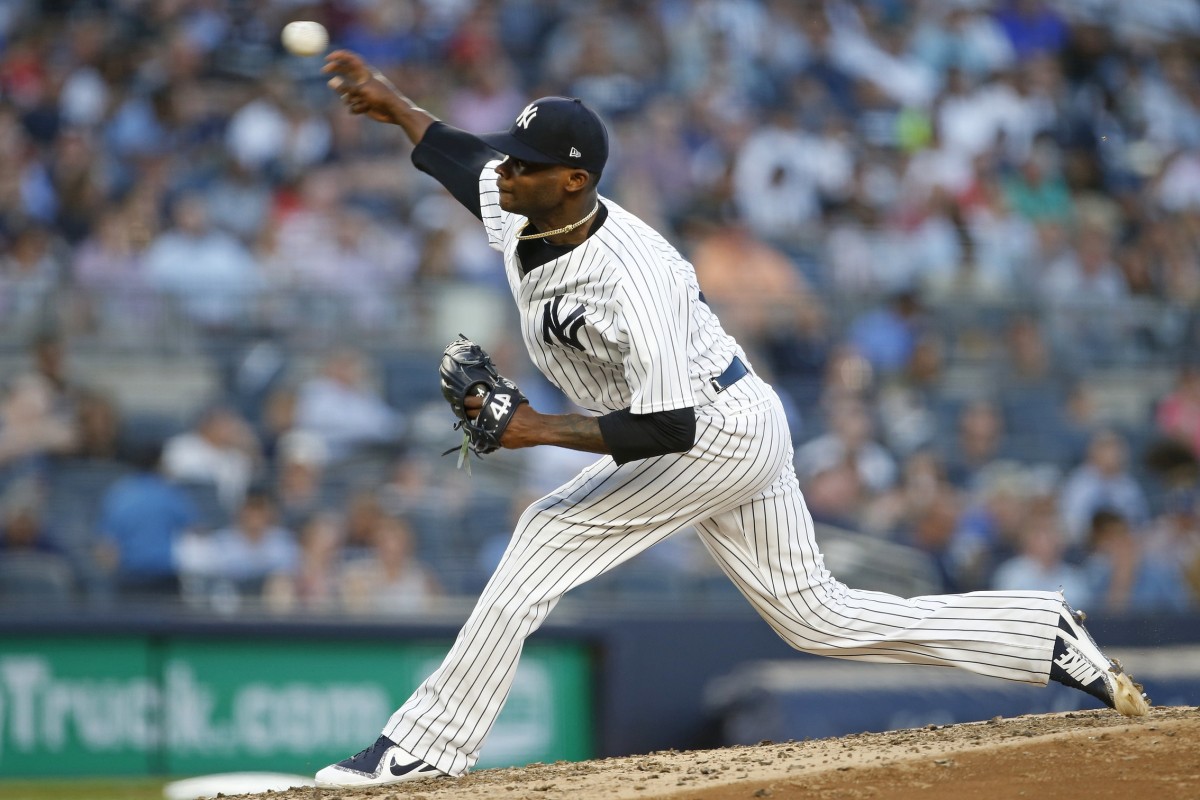The Opener is 2018’s latest baseball innovation. Just over a month ago, the Tampa Bay Rays started relief pitcher Sergio Romo against the Los Angeles Angels. It was mostly a move out of necessity since an already-thin Rays starting staff has been decimated by serious injuries this season. However, the opener was also a long-held sabermetric suggestion with solid logic behind it, even if it was pushed into service by exogenous events.
Since the Rays cracked the egg, lots of other teams have used openers. The logic is pretty simple: a team’s third or fourth best relief pitcher is almost always better than most of their starting pitchers on a per-inning basis, the first inning always features the team’s best hitters, and most starting pitchers will exit the game either early enough that the team will have to use its good relief pitchers to finish the game or with a close enough score late in games that the appearances immediately become high-leverage. By starting the better relief pitcher against better hitters, you let the (often significantly worse) starting pitcher face easier competition. It also may add some predictability to a relief pitcher’s workload, decreasing injury risk.
The Yankees have an excellent pitching staff overall. They are second in fWAR and runs allowed in the American League, just ahead of the Red Sox and Rays. However, unlike other elite staffs such as the Astros, the Yankees are unbalanced. The Yankees have the #3 AL starting pitcher by fWAR in Luis Severino and the second-best bullpen in the game with its 2.77 ERA. After Severino, Sabathia and Gray are both firmly locked in the #25-#50 tier of pitchers, Domingo German has been good and bad, and Jonathan Loiasiga is still largely an unknown. Plus, there’s Masahiro Tanaka, who has been mostly bad this season.
Obviously, the Yankees shouldn’t use an opener in Luis Severino’s starts; he goes deep into games and is probably better on a per-inning basis than most Yankee relief pitchers. They also can’t use an opener for every other starter, because they risk wearing the bullpen out (even Tampa only uses an opener a few times per week). Who should follow an Opener? Here is my ranking from least-fitting to best-fitting.
5. Luis Severino
No way.
4. Sonny Gray
Sonny Gray has been frustrating this season. His April was disastrous, with an ERA of 6.67. Since then, he has a better, though flawed, starting pitcher. His 4.05 ERA has been above average, and he has pitched eight innings at least three times. In a world of unlimited resources, Gray might benefit from an opener, but the Yankees could waste some bullpen bullets by doing so. He’s also a veteran who may be difficult to persuade about the merits of the Opener. Gray starts.
3. Domingo German*
German has pitched into the sixth inning or later in each of his last four starts. After a rocky initial few starts, German has settled into an effective starting role. In fact, some tea leaves in his statistical record suggest that he could be an elite starting pitcher. He’s ahead of Gray on this list only because Gray is a veteran who can resist a command to follow the Opener, and German is a rookie who isn’t there yet. German starts.
*Written before his 6/24 start
2. C.C. Sabathia
I’m as delighted by Sabathia’s late-season renaissance as any Yankee fan. While FIP doesn’t think his 3.18 ERA is legit, Statcast’s xwOBA suggests that his weak contact abilities are real, and have been for some time. However, Sabathia’s bag of tricks has not allowed him to pitch deep into games. The veteran gets killed after the third time through the batting order: his OPS-against the first time he sees a batter is .605, the second time is .677, and the third time is .956. On days where he is on, Sabathia has been able to pitch into the 7th and 8th innings, but for the most part, he’s good for just 18 batters. Relief pitchers should take over after that.
Sabathia is also a left-handed pitcher, while all of the good Opener candidates on the Yankee roster are right-handed pitchers. This allows for some strategic maneuvering. If the top of the opposing lineup is lefty-heavy, Sabathia should start. If it is right-heavy, Chad Green should take care of them.
1. Jonathan Loaisiga
This one is a no-brainer. Loaisiga has been pressed into service before he is truly ready to pitch in the major leagues. While the rookie has great stuff and a promising future, a combination of nibbling and pitch counts have prevented him from pitching past the 5th inning in any major or minor league starting in 2018. The Yankees should both spare him from the tough first inning and, more importantly, allow him to air out his arm in a shorter outing. Loaisiga’s lack of a strong breaking pitch could be less of a weakness if he’s only aiming for 3-4 innings anyway. Once Masahiro Tanaka returns, Loaisiga can return to a normal starting role in the minor leagues; with his control, he has the potential to go deep into games. However, for now, the Yankees should take advantage of their deep bullpen and let Loaisiga drive from the beginner’s tee.
Photo credit: Adam Hunger / USA TODAY Sports
